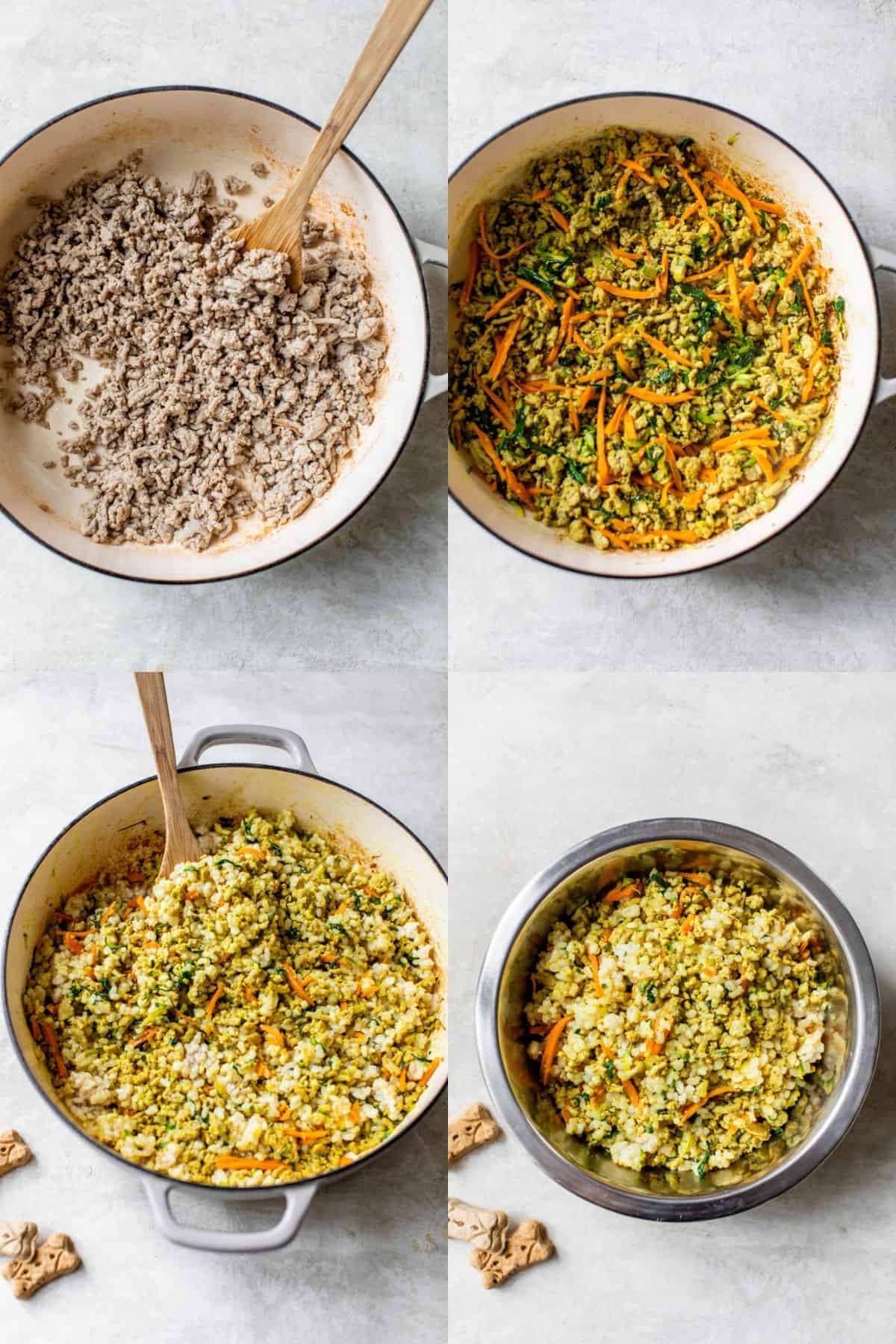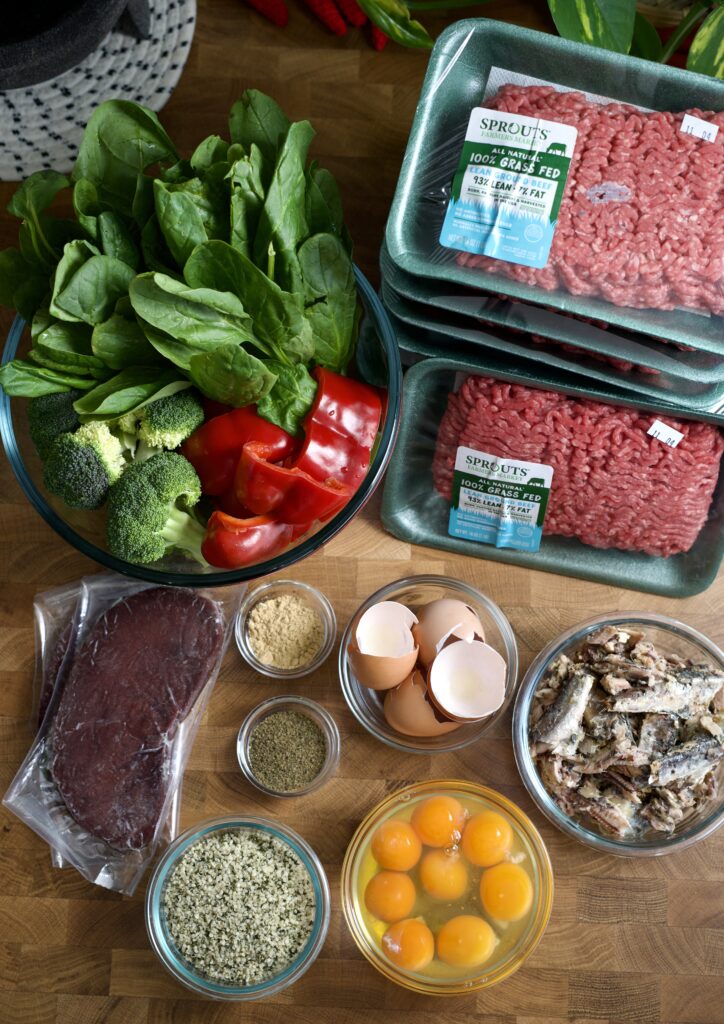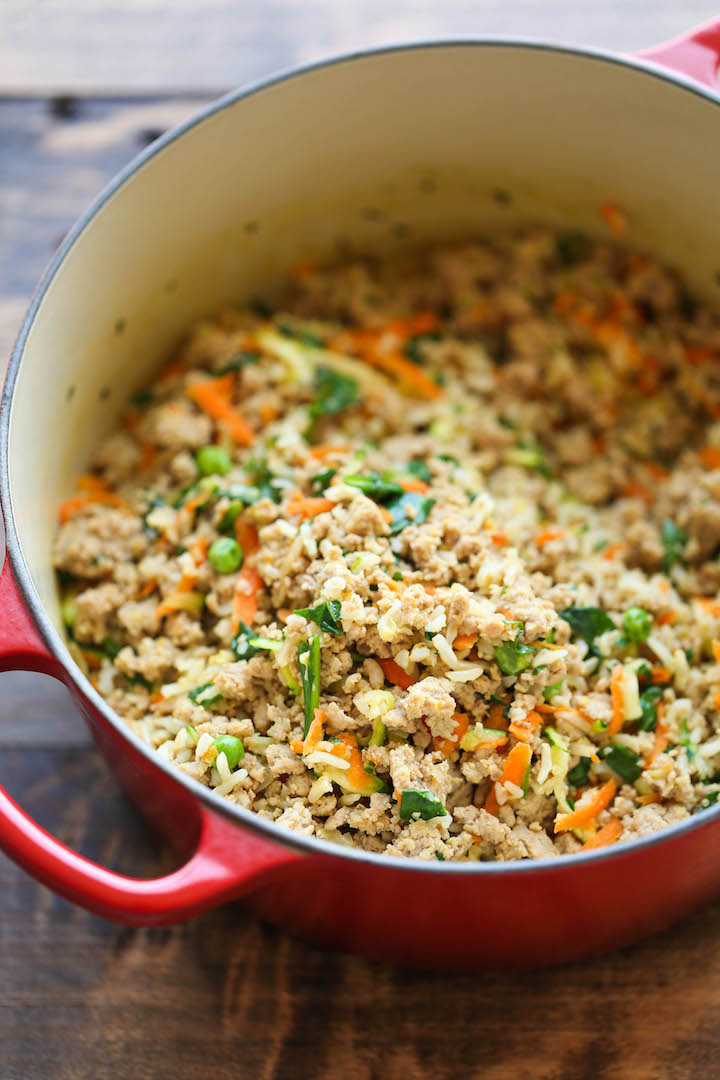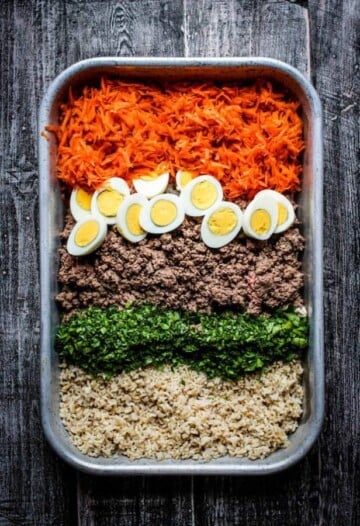If you’re a dog owner, it’s likely that you want the best for your furry companion. One of the most important ways to ensure their health and well-being is through their diet. While there are plenty of dog foods available on the market, many pet owners are opting to make their own dog food at home. Not only can it be a healthier option, but it can also be a more affordable and customizable solution. In this blog post, we’ll delve into the benefits of making your own dog food and provide some tips on how to get started. So, grab a pen and paper and get ready to take notes on how to make your furry friend’s taste buds sing with homemade dog food!
Importance of making dog food at home
Making dog food at home is a beneficial and rewarding experience for both you and your furry friend. By preparing your dog’s meals, you have the opportunity to use dog-friendly leftovers from your own meals, reducing waste and saving money. Additionally, you have control over the ingredients, allowing you to include higher-quality options and avoid synthetic preservatives. Making homemade dog food also provides a fresh and palatable option for even the pickiest of eaters. Furthermore, it can be customized to meet your dog’s specific nutritional requirements, ensuring they receive a balanced and nutritious diet. With the various tools and equipment available today, home cooking for your dog has become easier and more efficient than ever before. So why not take the leap and give your beloved pup the benefits of homemade dog food? They’ll appreciate the extra love and care put into every bite. [1][2]

Benefits of homemade dog food
Benefits of Homemade Dog Food
Feeding your dog homemade food can come with some great benefits. One of the main advantages is that you have control over what goes into your dog’s meals. Commercially produced dog food often contains fillers and low-quality ingredients, while homemade dog food allows you to optimize the nutritional value by using whole, high-quality ingredients.
Another benefit is that homemade dog food can be tailored to your dog’s specific needs. Whether your dog has allergies, food intolerances, or certain health conditions, you can customize the ingredients to suit their requirements. This can lead to improved digestion, fewer health issues, and a healthier overall dog.
Homemade dog food can also be more appealing to picky eaters and can help with diet management. Plus, preparing meals for your dog at home can be a great bonding experience.
Overall, homemade dog food can provide your furry friend with a healthier, more nutritious diet, which can lead to a happier and more energetic dog. Consider making the switch and see the positive difference it can make in your dog’s life. [3][4]

Safety concerns
When it comes to making your own dog food, it’s important to be aware of the safety concerns associated with this practice. While homemade dog food has many benefits, such as providing high-quality and delicious meat for your furry friend, there are also potential risks involved.
One major concern is the potential for bacterial contamination. Cooking meat improperly or using raw meat can lead to the presence of harmful bacteria such as salmonella and E. coli. It’s crucial to ensure that any meat included in your dog’s food is thoroughly cooked to eliminate these risks.
Another safety concern is the inclusion of toxic ingredients in your homemade recipes. Some foods that are safe for humans can be toxic to dogs, such as garlic, onions, chocolate, grapes, and macadamia nuts. It’s important to do your research and avoid using these ingredients in your dog’s food.
It’s also essential to store homemade dog food properly to prevent spoilage and contamination. Be sure to use airtight containers and refrigerate or freeze any leftovers promptly.
By being aware of these safety concerns and taking appropriate measures to address them, you can ensure that your homemade dog food is both nutritious and safe for your furry friend [5][6]
:strip_icc()/preparing-natural-food-for-pets-1137592020-52ac6351f68e499fb22594085222ca60.jpg)
Nutritional Requirements
Nutritional Requirements play a crucial role in ensuring the health and well-being of your furry friend. To provide a balanced homemade dog food, it is important to understand your pet’s specific needs. Dogs require protein, fat, carbohydrates, vitamins, and minerals in their diet. Protein sources can include animal meat, seafood, dairy, or eggs. Fat can come from meat or oil, while carbohydrates can be found in grains or vegetables. It is essential to choose ingredients that provide the necessary nutrients for your dog’s overall health.
Consulting with a veterinarian or veterinary nutritionist is recommended to ensure that your dog’s homemade diet meets their unique requirements. Factors such as age, size, health, and breed should be taken into consideration. Additionally, it’s important to note that homemade diets may not be suitable for all dogs, especially puppies or pregnant/lactating dogs, as they have specific dietary needs that may not be met adequately with homemade recipes found on the internet.
By understanding your dog’s nutritional requirements and seeking professional guidance, you can create a homemade dog food that promotes their overall health and well-being [7][8]

Ingredients
When making dog food at home, it’s important to choose the right ingredients to ensure your furry friend is getting all the essential nutrients they need. A balanced homemade dog food recipe should include protein, fat, carbohydrates, vitamins, and minerals. Good sources of protein include animal meat, seafood, dairy, or eggs. Fat can come from meat or oil, while carbohydrates can be obtained from grains or vegetables.
It’s also crucial to add crucial vitamins and minerals to your homemade dog food. For example, fish oil is a great source of omega-3 fatty acids, while flax seeds can provide additional nutritional benefits. Calcium, which is necessary for strong bones and teeth, can be obtained from dairy or other sources like egg shells.
Remember to cook all animal products to kill bacteria and ensure they’re safe for your pup. Avoid toxic foods like grapes, raisins, onions, garlic, avocados, and Macadamia nuts. And if you’re unsure about the recipe or want to make sure it’s tailored to your dog’s needs, consult with a pet nutritionist or veterinarian. By following these guidelines and using high-quality ingredients, you can create nutritious and delicious homemade meals for your beloved pup. [9][10]

Tips to consider
When it comes to making your own dog food at home, there are a few tips to consider to ensure your furry friend gets the nutrition they need. First and foremost, it’s important to consult with your veterinarian before making any dietary changes for your dog. They can provide you with advice and guidance based on your specific dog’s needs. It’s also important to understand the nutritional requirements for dogs and make sure your homemade meals meet those needs. This includes providing a balance of proteins, fats, carbohydrates, vitamins, and minerals. Another tip is to choose high-quality ingredients, such as lean meats, vegetables, and grains. Avoid ingredients that are toxic to dogs, like onions or chocolate. Additionally, meal planning can be helpful to ensure your dog gets a variety of nutrients over time. Consider rotating different ingredients and recipes to provide a well-rounded diet. By following these tips, you can make homemade dog food that is nutritious and delicious for your furry friend. [11][12]

Meal Planning
Meal planning is an essential part of making your own dog food. It ensures that your furry friend gets the right balance of nutrients in their meals. To start meal planning, consider your dog’s weight and exercise level. Use a chart to determine the appropriate portion sizes for your dog. Remember, it’s important not to overfeed or underfeed your dog. As you plan meals, keep in mind the nutritional requirements for dogs. A balanced meal should consist of 2 parts meat, 1 part low lectin carbohydrates like sweet potatoes or parsnip, and 1 part vegetables and fruits. You can also add oils and herbs to enhance the flavor and nutritional value of the food. Batch cooking and freezing individual portions can make meal preparation more convenient. Just make sure to thaw the meals in advance and add some food toppers like healthy oils or cottage cheese. With proper meal planning, you can ensure that your dog receives a healthy and balanced diet [13][14]

Making Homemade Dog Food
Tools and equipment
When it comes to making your own dog food, having the right tools and equipment can make the process much easier. Here are a few essentials that will help you create delicious and nutritious meals for your furry friend.
1. Crockpot: This kitchen tool is perfect for cooking large batches of dog food with little effort. It allows you to slow cook your ingredients, ensuring that all the flavors are well combined.
2. High-speed blender or food processor: This tool comes in handy when you need to blend or chop ingredients for your dog’s food or treats. It saves you time and is easy to clean.
3. Mason jars and vacuum sealer: These are ideal for storing your homemade dog food. Mason jars are great for freezing and keeping the food fresh, while a vacuum sealer helps maintain the food’s quality for an extended period.
4. Silicone molds and cookie cutters: These are useful when making dog treats. They come in various shapes and sizes and make the treats look fun and appealing.
Having these tools on hand will make the process of making your own dog food enjoyable and efficient. Plus, you’ll have peace of mind knowing exactly what’s going into your dog’s meals. [15][16]

Step by step guide
Step by Step Guide to Making Homemade Dog Food
Making homemade dog food is a rewarding and healthy option for your furry friend. To get started, consult with your veterinarian or a veterinary nutritionist to ensure your dog’s specific nutritional needs are met. Once you have the green light, follow these simple steps.
1. Gather the necessary tools and equipment, such as a slow cooker or food processor, to make the process easier and more efficient.
2. Research and choose a balanced recipe that includes essential ingredients like protein, carbohydrates, fats, vitamins, and minerals. Consider using a premixed dog food base or a vitamin supplement to ensure complete nutrition.
3. Prepare the ingredients. Chop or process the protein, vegetables, fruits, and grain (if needed) into the appropriate size for your dog.
4. Cook the ingredients according to the recipe instructions. This can be done in a slow cooker, on the stove, or in the oven. The cooking method may vary depending on the recipe.
5. Allow the food to cool before portioning it into individual servings. Freeze the portions that won’t be used immediately.
Remember to monitor your dog’s weight and adjust the portions as needed. Regularly consult with your veterinarian to ensure your homemade dog food meets your dog’s nutritional requirements. With these simple steps, you can create nutritious and delicious meals for your canine companion. [17][18]

Recipe Ideas
Are you looking for some recipe ideas for homemade dog food? Making your own dog food allows you to have control over the ingredients and ensure your furry friend is getting a well-balanced diet. Here are a few delicious recipe ideas to consider:
1. Ground Turkey and Veggie Delight: Combine 1 pound of ground turkey with 6 cups of water, 2 cups of brown rice, and 1 teaspoon of dried rosemary. Add in a half-package of frozen broccoli, carrots, and cauliflower for added nutrients.
2. Beef and Rice Medley: Brown and crumble 3 pounds of ground beef and mix it with warm rice, sautéed carrots, broccoli, and sweet potato. Don’t forget to add in some fresh spinach for an extra dose of greens.
3. Pumpkin Peanut Butter Treats: If you’re looking for some tasty and nutritious homemade dog treats, try making these biscuits. They’re packed with pumpkin, peanut butter, spinach, zucchini, carrots, and oats.
These recipe ideas are just a starting point, and you can personalize them based on your dog’s preferences and dietary needs. Remember to consult with a veterinarian to ensure you’re providing a well-balanced diet for your furry friend. [19][20]
Benefits of Homemade Dog food over Commercially produced Dog food.
When it comes to choosing the best food for your furry friend, homemade dog food offers numerous benefits over commercially produced options. One of the primary advantages is the ability to have complete control over the ingredients. With homemade dog food, you can ensure that your dog is consuming high-quality, nutritious ingredients without any unnecessary additives or preservatives.
Additionally, homemade dog food allows you to tailor the meals to meet your dog’s specific nutritional requirements. You can easily adjust the protein content, incorporate a variety of fruits and vegetables, and eliminate potential allergens. This level of customization ensures that your dog receives a balanced diet that promotes their overall health and well-being.
Furthermore, homemade dog food offers peace of mind in terms of safety. With commercially produced dog food, there is always a risk of unknown ingredients, low-quality meats, and harmful additives. By preparing your dog’s food at home, you can eliminate these concerns and have confidence in the quality of the ingredients you are using.
In conclusion, making homemade dog food is a great way to prioritize your pet’s health and provide them with the best possible nutrition. By taking the time to prepare their meals with love and care, you can ensure that they receive a wholesome diet that supports their overall well-being. [21][22]






